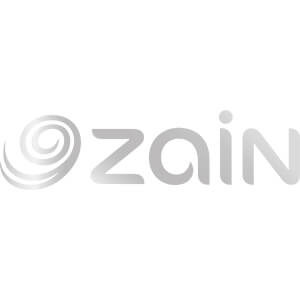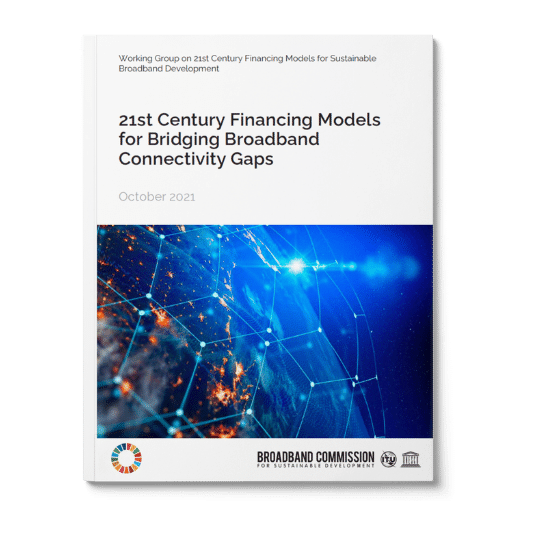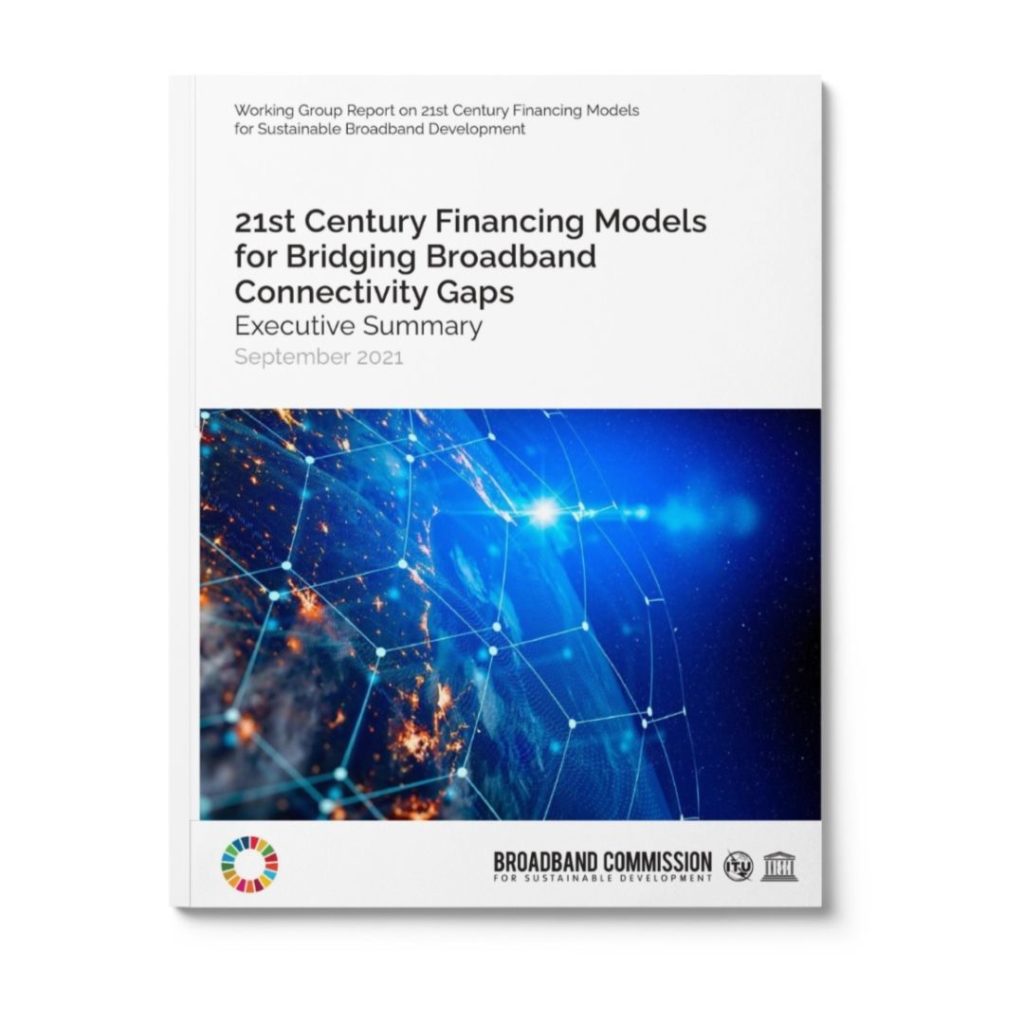What sort of multistakeholder action can be taken to bring meaningful connectivity to widely unconnected populations?
The Broadband Commission Working Group on 21st Century Financing Models for Sustainable Broadband Development has provided governments and policymakers with a set of policy recommendations for fostering innovative broadband funding, financing and investment strategies. Co-Chaired by Commissioner Mr. Bocar Ba, Chief Executive Officer of the SAMENA Telecommunications Council, and a representative from the Zain Group, recommendations from the Working Group’s 2021 report aim to enable and empower existing and new funding models to achieve the Commission’s targets for universal broadband connectivity and affordable access.
Setting the Stage
Background Overview
In the 21st Century there has been, and continues to be, a great deal of open innovation and shared benefits because of the connectivity that the Internet provides. However, the investment, funding and financing models that enabled earlier infrastructure development and its utilization no longer suffice.
In 2016, the ITU estimated that it would cost up to $450 billion to connect the next 1.5 billion people. Since then, network operators and other industry players have undertaken considerable efforts in expanding infrastructure globally. However as of 2020, there are still around 1 billion people who are not covered by mobile broadband networks and another 2.7 billion who are within coverage range but are not accessing mobile internet services. The UN Broadband Commission’s ‘Moonshot for Africa’ Working Group estimates that, in Africa alone, it will cost about $100 billion to achieve ubiquitous broadband adoption by 2030 via 3G and 4G radio access networks.
- The funding is a crucial issue to address – both in terms of infrastructure and in terms of meaningful engagement with the Internet and digital economy where coverage is available.
The Way Forward
Findings and Recommendations
Consensus-driven findings of the Working Group reflect the fact that traditional investment, funding, and financing models are insufficient to close the connectivity gaps and reach the desired targets. Moving forward in a significant way will require developing innovative models. Innovation, however, is easier to acknowledge than it is to accomplish, which is why the Working Group’s report, 21st Century Financing Models for Bridging Broadband Connectivity Gaps, suggests developing a variety of innovative models through novel combinations of traditional ones as well as employing completely new ones.
Recommendations
The Working Group Report’s recommendations will drive progress in connectivity through a more effective set of investment, funding, and financing mechanisms and by engaging a broader range of stakeholders.
- 1. Broaden the Base of Contributors
Acknowledge who benefits from connectivity and expand the circle of responsibility to contributors beyond traditional players
- 2. Earmark Proceeds from ICT Sector Participants
Governments should ensure that a portion of the ICT sector’s existing contributors to governments is earmarked to be spent on initiatives supporting the Broadband Commission’s connectivity and adoption goals
- 3. Reform Universal Service and Access Funds (USAFs)
Existing USFs, where they have been found to be ineffective, should be more effective financing mechanisms that support and expand connectivity to ICT services. As they of 2021, USAF models rely almost solely on network operations for funding, and of the funding that is collected from the operators, more than 50% is not utilized, while 30% of the USAFs distributed none of the funding they had collected
- 4. Create an International Fund
The creation of an international fund would ideally reside within an existing international organization in collaboration with UN agencies and be designed with the previous three strategic recommendations of this report in mind. Such a fund would benefit from an impartial administration that could control the advisory and disbursement responsibilities
A full list of recommendations can be found in the Executive Summary.
These recommendations are intended to drive progress in connectivity through a more effective set of investment, funding, and financing mechanisms and by engaging a broader range of stakeholders. Actions taken to realize these recommendations will have cascading effects and more equitably distribute the costs of continuous and sustainable development in an area that will evolve substantially throughout the next decades.
- These strategic recommendations act as a foundation for driving connectivity not only toward the Commission's 2025 Targets, but toward the more optimistic goal of connecting all populations into a larger fabric where individuals and communities are not excluded from the opportunity to live, work and engage with their global peers.
The Working Group Model
Composition and Activities

Mr. Bocar Ba
Chief Executive Officer, SAMENA Council Zain
Zain
Co-Chairs: SAMENA Council, Zain
- Denis O’Brien, Digicel
- Ann Aerts, The Novartis Foundation
- Amir Dossal, Global Partnerships Forum
- Makhtar Diop, IMF ( formally of the World Bank)
- Patrick Masambu, ITSO
- Inmarsat
- Jeffrey Sachs, Columbia University
- MTN
- Stephen Spengler, Intelsat
- Mats Granryd, GSMA
- Carlos Jarque, Americal Movil
- Lacina Koné, Smart Africa
- Achim Steiner, UNDP
- KT Corporation
- Rwanda
- ITC
- Sunil Mittal, Bharti Airtel
- Dato Lee Yee Cheong, UNESCO-ISTIC
- Orange
- H.E. Mr. Roberto Sanchez, Ministry of Economic Affairs and Digital Transformation of Spain
- Former Commissioner Joanna Rubinstein, World Childhood Foundation
- OECD, Ms Verena Weber
- World Economic Forum, Ms Isabelle Mauro, Mr Jonathan Bahmani, Mr Rodrigo Arias
- IFC, Ms Carlo Maria Rossotto
- Mr Bill Tai
- Blue Orange Capital, Mr Amer Baig
- IADB, Mr Antonio García Zaballos
The Working Group was launched during the Broadband Commission Annual Fall Meeting in New York on 22 September 2019. In the course of this engagement, the Group identified the most relevant solutions to address the broadband connectivity gap. Some of the identified solutions will influence the selection of a particular innovative investing, financing and funding model, whilst other solutions (mostly those related to demand measures and to the regulatory and policy environment) can be, and should be, applied independently. Efforts on the demand side and on the policy and regulatory environment side will decrease, but not eliminate, the residual connectivity gap that is the focus of this Working Group’s study.
Press
Stay engaged with the report
Click the icon to download the promotional toolkit for access to social copy, graphics, quote cards, key messages, and more.
Focus Area
Outcome Resources
Co-Chairs
Commissioner Bocar Ba
Chief Executive Officer, SAMENA Telecommunications Council
&
Zain
Broadband Advocacy Targets
SDGs








